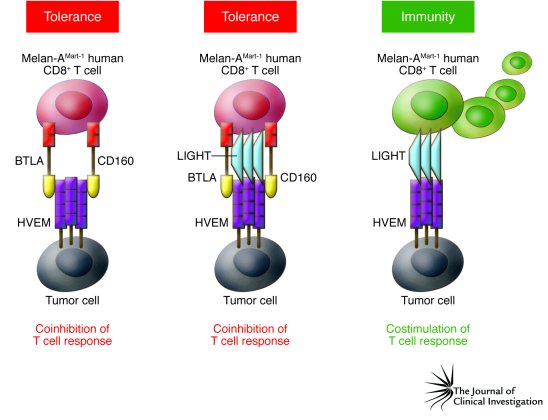Citation Information: J Clin Invest. 2010;120(1):76-80. https://doi.org/10.1172/JCI41811.
Abstract
Attenuating coinhibitory molecules for the treatment of cancer is gaining a great deal of attention as a strategy for immunotherapy. The B and T lymphocyte attenuator (BTLA, CD272) is a novel coinhibitory molecule structurally and functionally related to CTLA-4 and PD-1. A study in this issue of the JCI by Derré et al. reveals that BTLA is expressed on virus-specific human CD8+ T cells but is progressively downregulated after their differentiation from a naive to effector phenotype (see the related article beginning on page 157). Surprisingly, tumor-specific human CD8+ T cells continue to express BTLA even after their differentiation to an effector phenotype. Remarkably, vaccination of melanoma patients with CpG led to BTLA downregulation on tumor-specific human CD8+ T cells, concomitant with restoration of their functionality. We discuss these findings in the context of the expanding field of cosignaling molecules and their implications for T cell–based therapies for cancer.
Authors
Chrystal M. Paulos, Carl H. June
Figure 3
Models of interaction among HVEM, BTLA, CD160, and LIGHT and their various functional effects on tumor-specific human CD8+ T cells.



Copyright © 2025 American Society for Clinical Investigation
ISSN: 0021-9738 (print), 1558-8238 (online)

